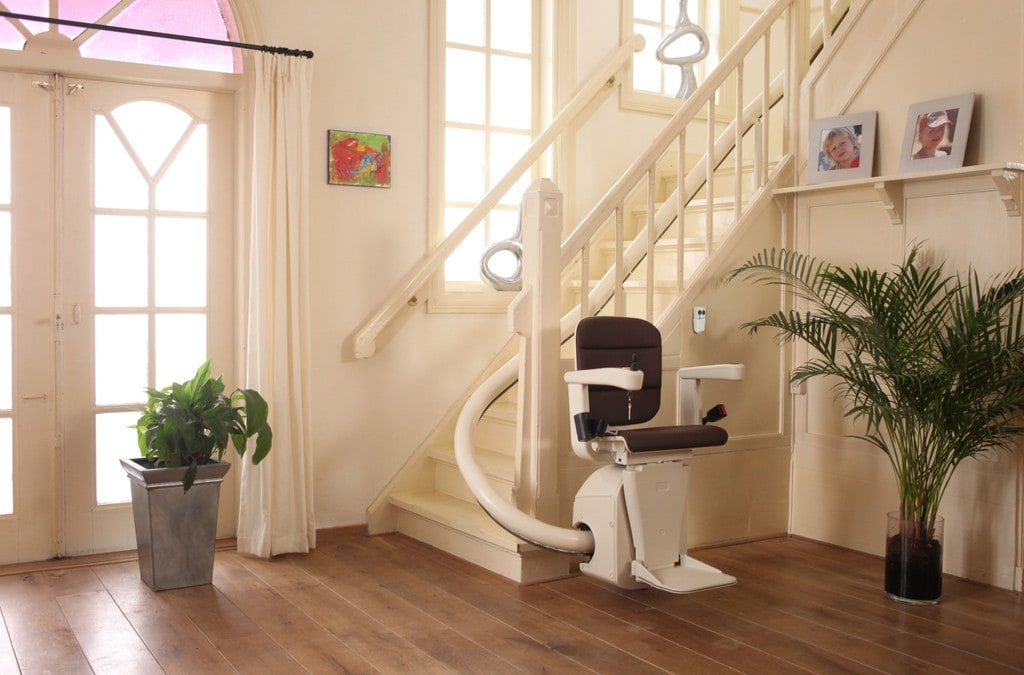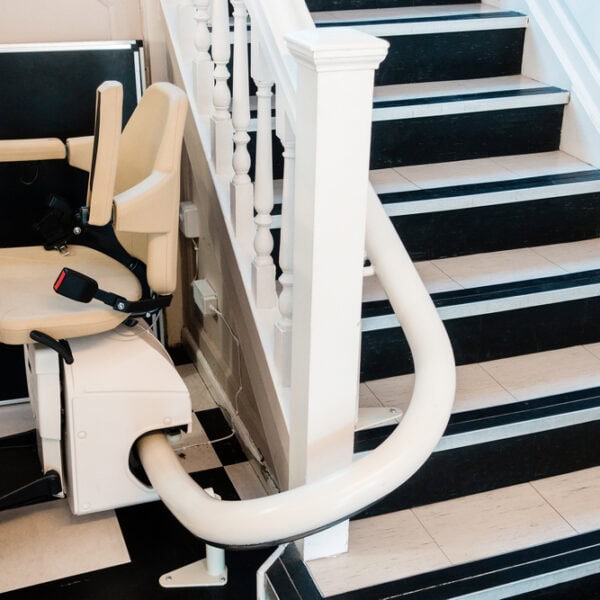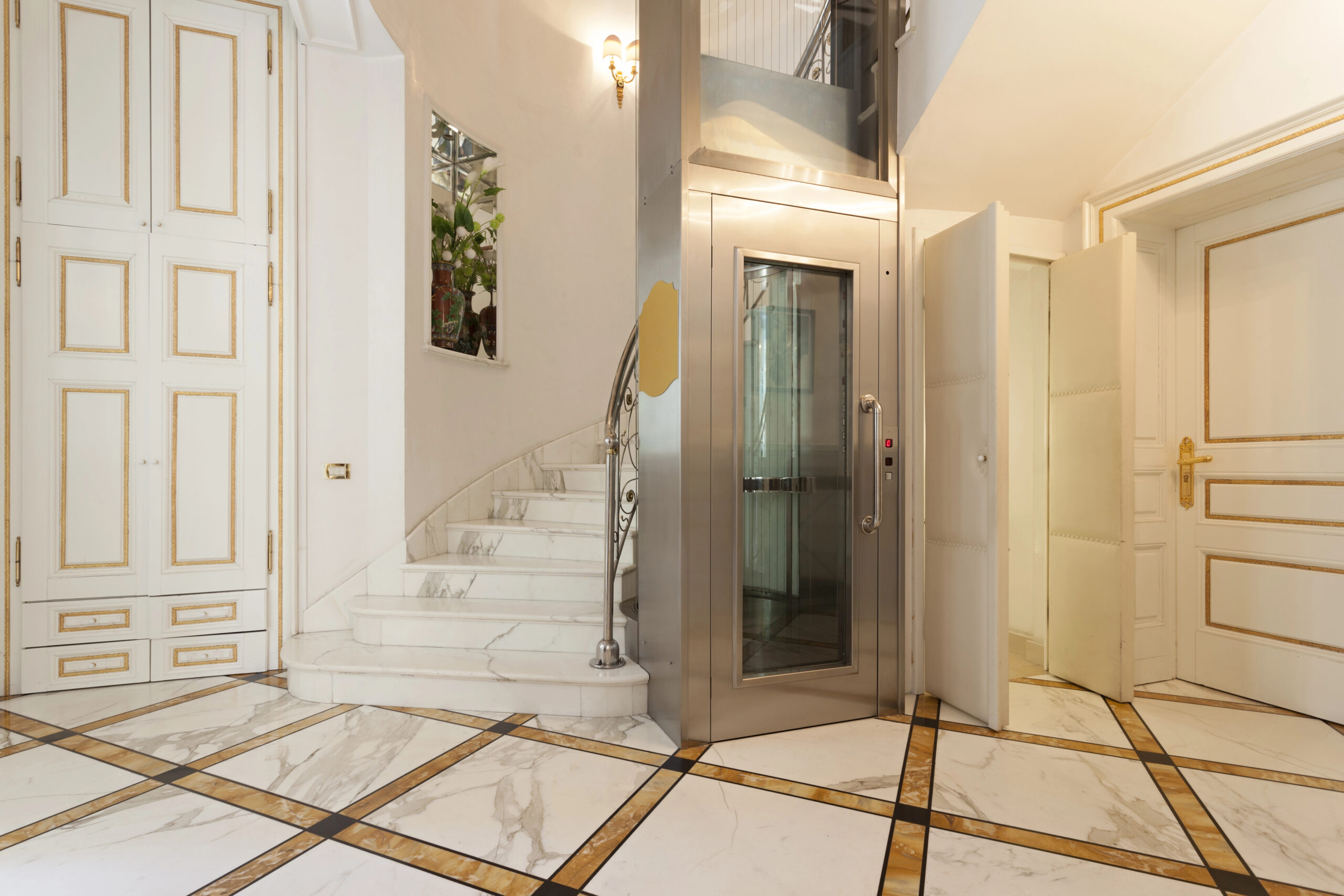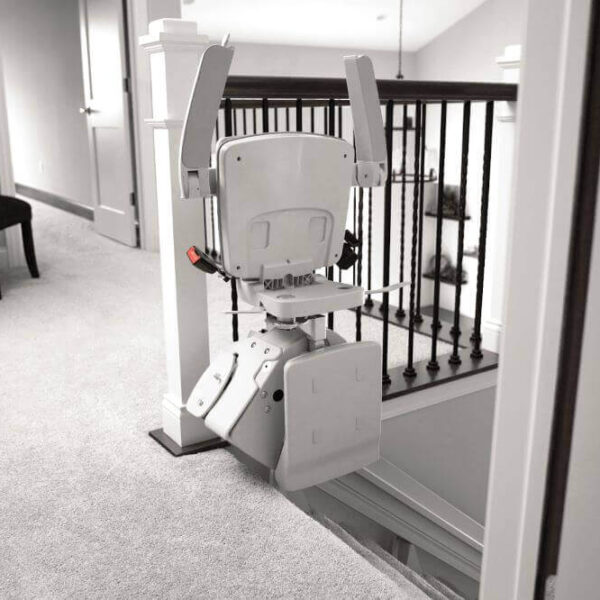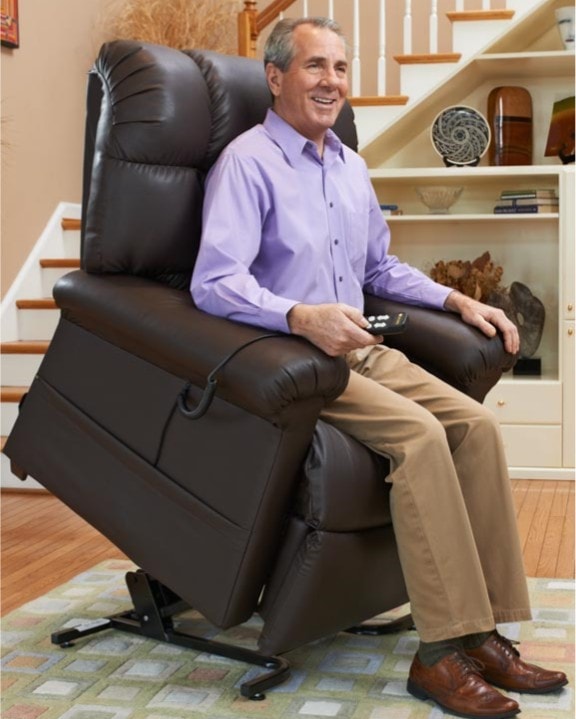
Choosing the Right Lift Chair
January 8, 2022Aging in Place: Growing Older at Home
September 16, 2022According to the National Council on Aging, one in four Americans over the age of 65 fall each year. For seniors, falls can be devastating. Falls can result in traumatic brain injuries and broken bones. These injuries can require surgery and lengthy hospitalization. Stairs can be particularly risky for many older adults. A report from Reuters those who are over the age of 85 had the highest injury rates related to the stairs. As we age, chronic pain, inflexibility, or vision issues can lead to trouble with the stairs. But these issues shouldn’t force seniors out of the homes that they love.
Here are some ways that you can make the stairs safe for seniors, so that you or your loved one can live independently and safely.
Get a stairlift
The safest way for seniors to get up and down the stairs is by using a stairlift. Electric stairlifts carry you up and down the stairs. And they’re very simple to use. There are stairlift models that fit both straight and curved stairways. While they’re usually used inside the home, there are outdoor stairlifts as well. Stairlifts can be installed in a day. They won’t damage your walls, and can be stowed so that others can walk up the stairs as normal
Add railings
Stairways in the home should have railings on both sides. The CDC recommends railings as an important safety fix for seniors living at home. Railings should be easy for the users to grip and available from the bottom step to the top, with no gaps. As you add railings, assure they are securely mounted and not wiggling. Also, be sure to add railings to all stairways in the home, including the steps leading into the house.
Eliminate carpet runners
The surface of the stairs can make steps more difficult for older adults who are unsteady, or who use a cane. To have the safest surface, eliminate any carpet runner from the stair. These runners, while a lovely décor addition, also add an increased risk of tripping.
Add non-slip strips
While carpet runners are a tripping hazard, hardwood stairs make slipping a possibility. To make hardwood stairs safer for seniors, add non-slip strips to the stairs. These will help prevent slips and falls.
Add a resting spot
If a staircase allows for it, on a landing or curve, consider adding a bench to offer a safe place to take a rest. Some larger homes allow for such an addition. A small bench can give a senior a much-needed break on the way up or down the stairs.
Check the lights
Vision difficulties can make stairs dangerous. A stairway that isn’t well lit is especially problematic. You can add safety measures by making sure the stairs, both inside and outside the house, are well lit. Shadows can make stepping difficult for seniors who have trouble with depth perception. Add overhead lighting as necessary to prevent shadows and make the stairs safer.
Keep the path clear
Stairs should offer a clear path and be free from clutter. Many people, not just seniors, use the first few stairs as a place to hold items that need to go upstairs eventually. But these extra piles of laundry or pieces of clutter can be a trip hazard. Instead, keep a basket near the stairs to put those items into and have someone else take them up at another time.
Use contrasting colors
For seniors with vision difficulties, it can be hard to tell where one step ends and the other begins. To help, consider painting the stairs in contrasting colors. Alternate dark and light stain to make the stairs plainly visible. Consider working with a designer to choose colors that will look appealing. This DIY project can be completed in a weekend.
Adjust the rise
In some cases, a complete remodel of the stairs can be the best option. If possible, choose stairs that have a lower rise so that you or your loved one doesn’t have to step as high to get to the next stair. This will help seniors with leg conditions that make taking high steps painful.
Reduce stair time
Consider adapting the home’s design to reduce the number of times an older adult needs to go up the stairs. For example, a downstairs bedroom and bathroom can cut down on the need to go upstairs. The fewer trips up the stairs, the lower risk of falling on them.
Exercises to improve strength and flexibility
Consider working with an outpatient physical therapist to work on balance and strength. Both of these are crucial to preventing falls. If you’re concerned about your senior loved one living at home with stairs, talk to their primary care physician. A doctor may provide a therapy referral. Exercises can do wonders for building lower body strength and endurance, as well as balance.
Need help making the stairs safe for seniors?
At CAPS Remodeling, we understand that seniors want to stay in the home they love. We have a wealth of experience in stairlifts and other home modifications that make living independently easier. Contact us today to get more information about adding a stairlift to your home.

Introducing Jeff Cates, the visionary Founder and Owner of CAPS Remodeling. After experiencing a profound personal event involving his son in 2007, Jeff was inspired to serve a higher purpose: to create safer, more comfortable, and independent living conditions for the elderly and disabled by modifying their current homes. Jeff’s deep-seated religious beliefs form the moral compass that steers CAPS daily operations. Apart from his unwavering dedication to his work, Jeff finds joy in boating and cherishing moments with his family.

